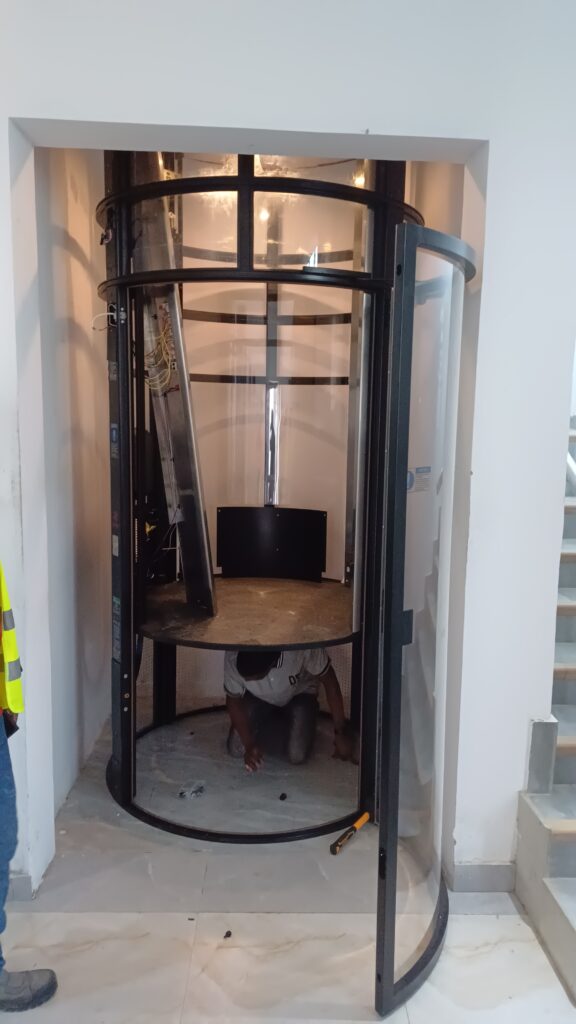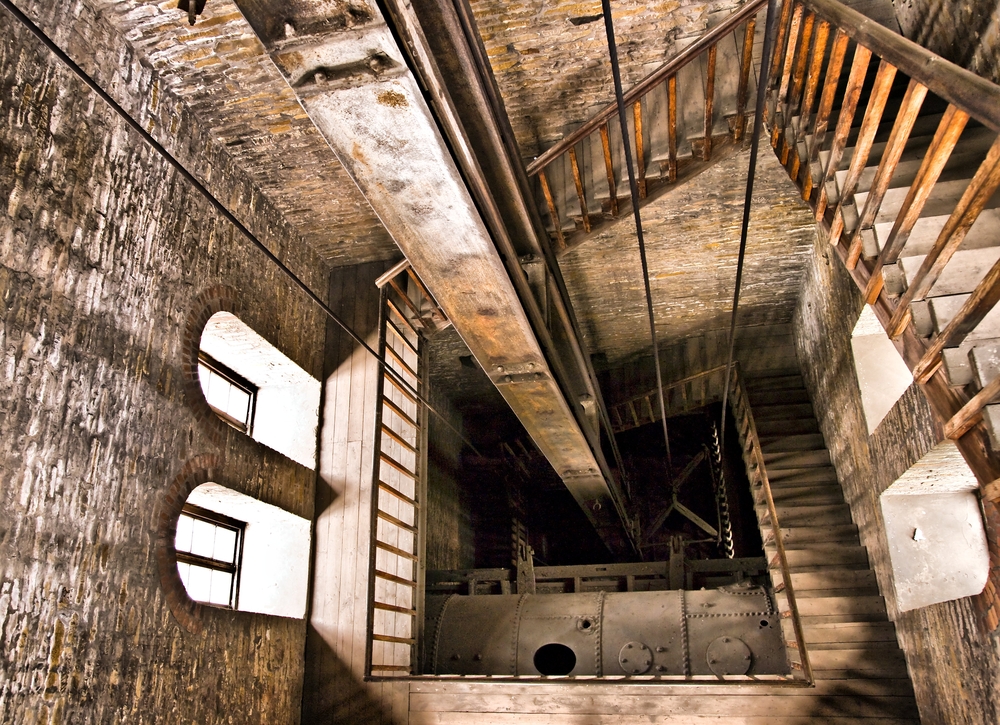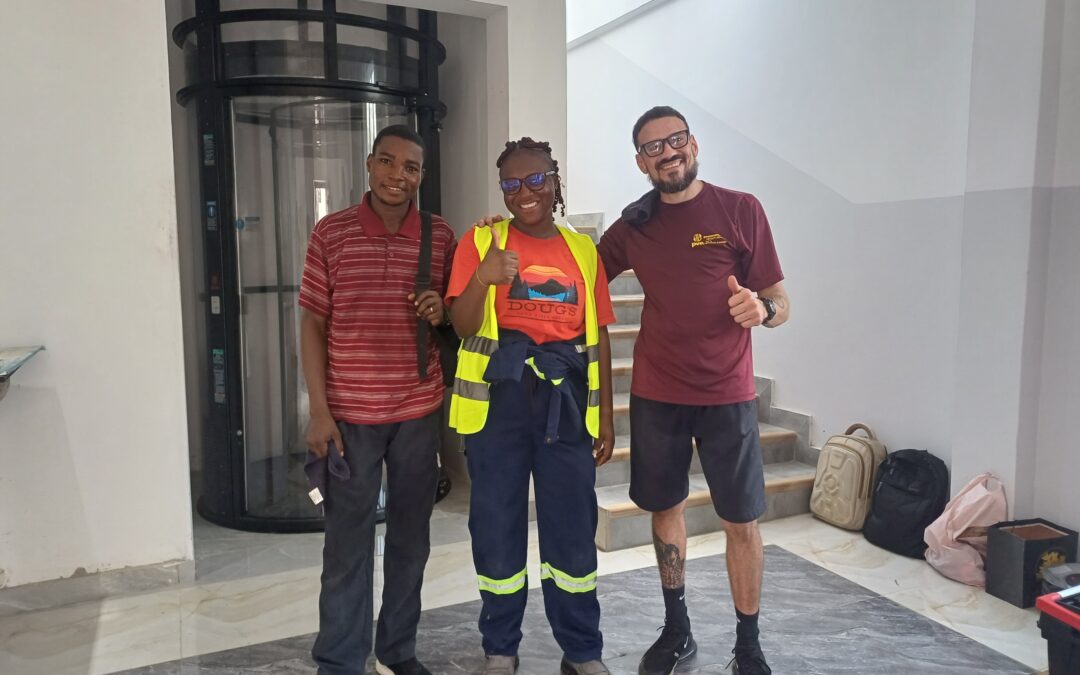Introduction
Elevators and lifts are critical for the smooth movement of people and goods in high-rise buildings across Nigeria. Whether in residential apartments, office complexes, or commercial buildings, lifts ensure efficiency, safety, and convenience. However, for lifts to perform optimally, they require regular maintenance and timely upgrades.
This guide will explore the best practices for maintaining and upgrading your lifts in Nigeria, ensuring safety, reliability, and longevity. We will also highlight common issues, maintenance tips, and the importance of upgrading outdated systems. Elevators and lifts are indispensable components of modern buildings in Nigeria, facilitating the vertical transportation of people and goods in a safe and efficient manner. From bustling commercial centers in Lagos to towering residential apartments in Abuja, lifts play a crucial role in daily life. However, the smooth operation of these essential systems hinges on consistent maintenance and timely upgrades. Neglecting these crucial aspects can lead to malfunctions, safety hazards, and ultimately, disruptions to building operations. This comprehensive guide delves into the best practices for maintaining and upgrading lifts in Nigeria, ensuring their safety, reliability, and longevity.
The Importance of Regular Maintenance:
Regular maintenance is the cornerstone of a well-functioning lift system. It’s not merely about addressing problems as they arise; it’s a proactive approach that prevents issues before they escalate, minimizing downtime and maximizing the lifespan of the equipment. In Nigeria, where power fluctuations and environmental factors can impact lift performance, a robust maintenance schedule is even more critical.
Here’s why regular maintenance is paramount:
- Enhanced Safety: Lifts are complex machines, and even minor malfunctions can pose significant safety risks. Regular inspections and maintenance help identify potential hazards, such as worn-out components, faulty wiring, or malfunctioning safety features, preventing accidents and ensuring the safety of passengers.
- Improved Reliability: Consistent maintenance reduces the likelihood of unexpected breakdowns, ensuring the lift’s continuous availability. This is particularly important in high-traffic buildings where a malfunctioning lift can cause significant inconvenience and disruption.
- Extended Lifespan: Just like any machine, lifts require proper care to function optimally over time. Regular maintenance, including lubrication, cleaning, and component replacement, helps prolong the lifespan of the lift, delaying the need for costly replacements.
- Cost Savings: While maintenance involves some expenditure, it is significantly less expensive than dealing with major repairs or replacements resulting from neglect. Proactive maintenance can also improve energy efficiency, leading to lower operating costs.
- Compliance with Regulations: Nigerian building codes and safety regulations often stipulate regular lift inspections and maintenance. Adhering to these regulations is crucial for legal compliance and ensures the safety of building occupants.
Understanding the Importance of Lift Maintenance
Why Regular Maintenance is Crucial
Regular lift maintenance is essential to ensure:
- Safety: Reduces the risk of accidents and malfunctions.
- Performance: Ensures smooth and efficient operation.
- Longevity: Prevents premature wear and tear.
- Cost Savings: Avoids expensive repairs and replacements.
- Regulatory Compliance: Meets safety standards and legal requirements.
Common Maintenance Issues Faced in Nigeria
Lift owners in Nigeria often encounter challenges such as:
- Frequent power fluctuations affecting lift performance.
- Lack of professional technicians leading to poor servicing.
- High humidity and dust causing wear and tear.
- Difficulty in obtaining genuine spare parts.
For more insights into common lift issues, read: Common Issues with Lifts and Elevators in Nigeria and How to Fix Them
Essential Elevator Maintenance Practices
Regular Inspection and Servicing
Routine checks by professional lift technicians can identify minor issues before they escalate. Essential components to inspect include:
- Doors and Sensors: Ensure they open and close smoothly.
- Cables and Pulleys: Look for signs of wear or fraying.
- Control Systems: Check for software malfunctions.
- Brakes and Emergency Systems: Confirm their efficiency.
Cleaning and Lubrication
Keeping lifts clean and well-lubricated prevents dust accumulation and mechanical wear. Key maintenance tasks include:
- Cleaning the shaft and machine room.
- Lubricating moving parts like pulleys and bearings.
- Checking the condition of guide rails.

Monitoring Electrical Components
Power supply issues are common in Nigeria. To prevent electrical failures:
- Install voltage stabilizers to protect against power surges.
- Regularly inspect and replace faulty wiring.
- Keep an emergency power backup system.
For more expert tips on maintenance, visit: Essential Elevator Maintenance Tips for Home and Office Owners
Essential Maintenance Practices:
A comprehensive lift maintenance program should encompass the following:
- Regular Inspections: Scheduled inspections by qualified technicians are essential to identify potential problems early on. These inspections should cover all aspects of the lift system, including the mechanical components, electrical systems, safety features, and control panels.
- Lubrication: Proper lubrication of moving parts is crucial to reduce friction and wear. The type of lubricant used should be appropriate for the specific lift model and operating conditions.
- Cleaning: Regular cleaning of the lift car, hoistway, and machine room is essential to remove dust, debris, and other contaminants that can interfere with the lift’s operation.
- Component Replacement: Worn-out or damaged components should be replaced promptly to prevent further damage and ensure safe operation. Using genuine parts from reputable suppliers is crucial for maintaining the lift’s performance and reliability.
- Safety Checks: Regular testing of safety features, such as the emergency brakes, door interlocks, and overload sensors, is vital to ensure they are functioning correctly.
- Record Keeping: Maintaining detailed records of all maintenance activities, inspections, and repairs is essential for tracking the lift’s performance and identifying recurring issues.
3. Upgrading Your Lift System for Better Performance
In today’s fast-paced world, vertical transportation is more than just moving people and goods; it’s about optimizing building performance. Outdated lift systems can hinder efficiency, compromise safety, and even detract from your property’s value. Upgrading your lift system is a smart investment that yields significant returns.
Why Upgrade Your Lift System?
- Enhanced Safety: Modern lifts incorporate advanced safety features, like improved door sensors, emergency braking systems, and overload protection, minimizing risks and ensuring passenger well-being. Older systems may lack these critical safeguards.
- Improved Efficiency: Newer lift technology, such as variable frequency drives and regenerative drives, significantly reduces energy consumption, leading to lower operating costs and a smaller carbon footprint. Faster travel speeds and optimized traffic flow also improve efficiency, minimizing wait times and maximizing building productivity.
- Increased Reliability: Older lifts are more prone to breakdowns, causing disruptions and inconveniencing building occupants. Upgrading to modern, more reliable systems reduces downtime and ensures smooth, continuous operation.
- Enhanced Aesthetics: A modernized lift car, with updated finishes, lighting, and user interfaces, enhances the overall aesthetic appeal of your building, creating a positive impression for tenants, visitors, and clients.
- Increased Property Value: Well-maintained and upgraded lifts are a valuable asset that can increase the market value of your property. Potential buyers and tenants appreciate modern amenities and reliable infrastructure.
- Compliance with Regulations: Building codes and accessibility standards evolve over time. Upgrading your lift system ensures compliance with current regulations, avoiding potential legal issues and ensuring accessibility for all.
What to Consider When Upgrading:
- Assessment of Existing System: A thorough evaluation of your current lift system is crucial to identify its strengths and weaknesses. A qualified lift service provider can conduct this assessment and recommend appropriate upgrades.
- Type of Upgrades: Upgrades can range from simple component replacements to complete system overhauls. The best approach depends on the age and condition of your existing system, your budget, and your specific needs.
- Choosing the Right Partner: Selecting a reputable and experienced lift service provider is essential for a successful upgrade project. Look for a company with a proven track record, qualified technicians, and a commitment to customer satisfaction.
- Budget and ROI: While lift upgrades require an investment, the long-term benefits, including reduced operating costs, improved reliability, and increased property value, often outweigh the initial expense.
While regular maintenance can extend the lifespan of a lift, older systems may eventually require upgrades to improve performance, safety, and energy efficiency. In Nigeria, where technological advancements are rapidly transforming building infrastructure, upgrading lifts is becoming increasingly important.
Reasons for upgrading your lift system:
- Improved Safety: Older lifts may lack modern safety features, putting passengers at risk. Upgrading the system can incorporate these features, enhancing the overall safety of the lift.
- Enhanced Performance: Upgrading the control system, motor, and other components can significantly improve the lift’s speed, smoothness, and energy efficiency.
- Increased Reliability: Older systems are more prone to breakdowns and require more frequent maintenance. Upgrading to newer technology can improve the lift’s reliability and reduce downtime.
- Modernization: Upgrading the lift car interior, lighting, and user interface can enhance the aesthetic appeal and user experience.
- Compliance with Standards: Older lifts may not meet current safety and accessibility standards. Upgrading the system ensures compliance with these regulations.

Signs That Your Lift Needs an Upgrade
Over time, lifts become outdated and less efficient. Signs that indicate a need for an upgrade include:
- Frequent breakdowns and increased repair costs.
- Slow operation and jerky movements.
- Outdated control systems and safety features.
- Non-compliance with new safety regulations.
Key Lift Upgrade Options
Upgrading your lift improves performance, safety, and energy efficiency. Common upgrade options include:
- Modernization of Control Systems: Replacing old systems with digital controls.
- Energy-Efficient Motors: Installing new motors that consume less power.
- Enhanced Safety Features: Adding emergency communication systems, sensors, and automatic rescue devices.
- Aesthetic Upgrades: Refurbishing interiors for a modern look.
Choosing the Right Upgrade Solution
When upgrading a lift, consider:
- Compatibility with existing infrastructure.
- Budget and cost-effectiveness.
- Compliance with Nigerian safety regulations.
- Expert consultation from certified lift companies.
To understand why upgrading is crucial, check out: Why Regular Upgrades Are Crucial for Older Lifts
4. Hiring Professional Lift Maintenance Services in Nigeria
Selecting a reputable and experienced lift service provider is crucial for both maintenance and upgrades. When choosing a provider in Nigeria, consider the following factors:
- Experience and Expertise: Look for a company with a proven track record in lift maintenance and installations.
- Qualified Technicians: Ensure the company employs certified and experienced technicians who are knowledgeable about different lift models and technologies.
- Comprehensive Services: Choose a provider that offers a full range of services, including maintenance, repairs, upgrades, and emergency support.
- Parts Availability: Ensure the company has access to genuine parts from reputable suppliers to minimize downtime during repairs.
- Customer Service: Choose a provider that offers excellent customer service and is responsive to your needs.
Choosing a Reliable Lift Maintenance Company
Selecting the right company ensures quality service. Consider the following factors:
- Experience and Expertise: Look for companies with a proven track record.
- Certifications and Compliance: Ensure they follow safety regulations.
- Availability of Spare Parts: opt for providers with access to genuine parts.
- 24/7 Emergency Support: Reliable assistance during breakdowns.
5. Best Practices for Lift Owners and Building Managers
Implementing a Maintenance Schedule
A structured maintenance schedule helps in tracking servicing needs. Recommended timelines include:
- Daily Checks: Inspect basic functions like door operation.
- Monthly Inspections: Conduct detailed assessments.
- Quarterly Servicing: Engage professionals for in-depth servicing.
- Annual Overhauls: Upgrade or replace worn-out parts.
Educating Building Users
Ensuring that building occupants understand lift etiquette and safety can prevent unnecessary damage. Important rules include:
- Avoid overloading the lift.
- Report any unusual noises or malfunctions.
- Use emergency buttons only in actual emergencies.
Investing in Smart Lift Technologies
Modern advancements such as IoT-based monitoring and predictive maintenance help in detecting faults before they occur, reducing downtime and enhancing efficiency.
Common Lift Issues in Nigeria:
Several factors can contribute to lift problems in Nigeria, including:
- Power Fluctuations: Unstable power supply can damage electrical components and cause malfunctions.
- Environmental Factors: Dust, humidity, and extreme temperatures can impact the performance and lifespan of lift components.
- Lack of Maintenance: Neglecting regular maintenance is a major cause of lift breakdowns and safety hazards.
- Aging Equipment: Older lifts are more prone to problems and may require more frequent repairs.
Conclusion:
Maintaining and upgrading lifts in Nigeria is essential for ensuring the safety, reliability, and longevity of these critical systems. By implementing a proactive maintenance program and investing in timely upgrades, building owners and managers can create a safe and efficient vertical transportation experience for all occupants. Choosing a qualified and reputable lift service provider is paramount to achieving optimal lift performance and minimizing disruptions. In the dynamic landscape of Nigerian infrastructure, prioritizing lift maintenance and upgrades is a crucial investment in the safety and functionality of modern buildings.Maintaining and upgrading lifts in Nigeria is essential for ensuring safety, reliability, and cost-effectiveness. Regular servicing, prompt repairs, and strategic upgrades help avoid frequent malfunctions and extend the lifespan of your elevator system. By working with certified professionals and leveraging modern lift technologies, building owners can optimize performance and create a safer, more efficient environment.
For further guidance, explore:
Why Regular Upgrades Are Crucial for Older Lifts
Common Issues with Lifts and Elevators in Nigeria and How to Fix Them
Essential Elevator Maintenance Tips for Home and Office Owners

